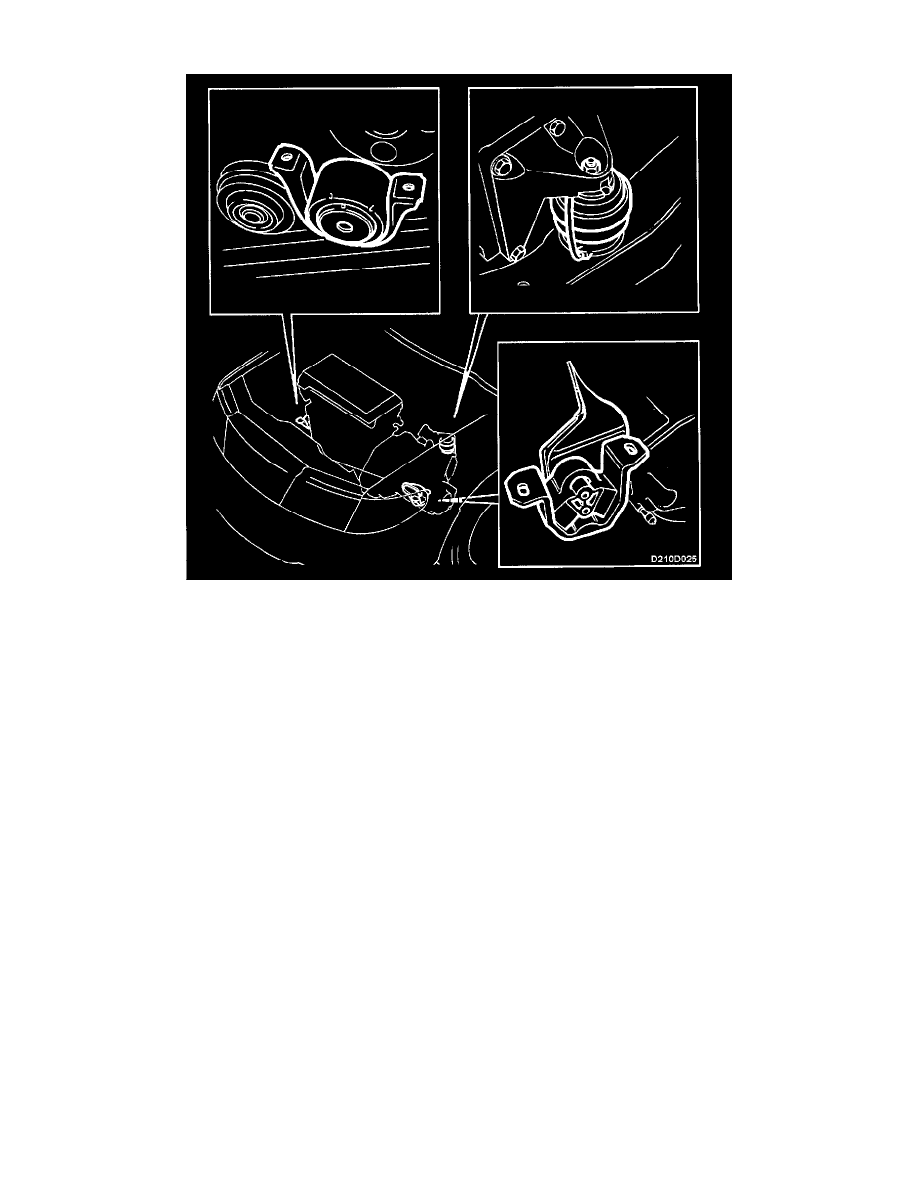900 S Hatchback L4-2290cc 2.3L DOHC EFI (1997)

Engine Mount: Description and Operation
BACKGROUND
The balance shafts are most effective within the most common working range of the engine, i..e. from 1800 rpm and above. At slower engine
speeds, in the range between idling and up to 1800 rpm, the balance shafts are unable to counteract engine vibration.
To provide effective damping of engine vibration at speeds below about 1800 rpm, the rear and righthand front mountings are of hydraulic type
that are designed to provide a maximum damping effect within this range.
Hydraulic mountings have the following advantages:
-
Improved damping of horizontal engine movements during acceleration
-
Improved damping of vertical engine movements on bumpy roads
-
Improved damping of engine movement when idling
-
Reduction of structure-borne sound between engine and body
DESCRIPTION
The hydraulic mounting has two chambers filled with a special hydraulic fluid. Interposed between the two chambers are a diaphragm and a
passage, the length and diameter of which determine the damping characteristics of the mounting. The diaphragm absorbs the forces generated by
small and normal movements of the engine.
If engine movement is more pronounced, the damping action of the diaphragm is insufficient and fluid is forced from the upper to the lower
chamber, thus equalizing the pressure. This gives the hydraulic mountings a progressive damping action, the resistance of the mountings increasing
as the load on them increases.
